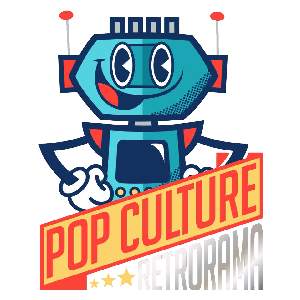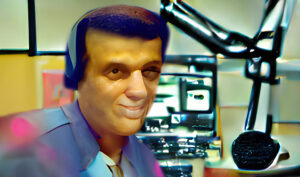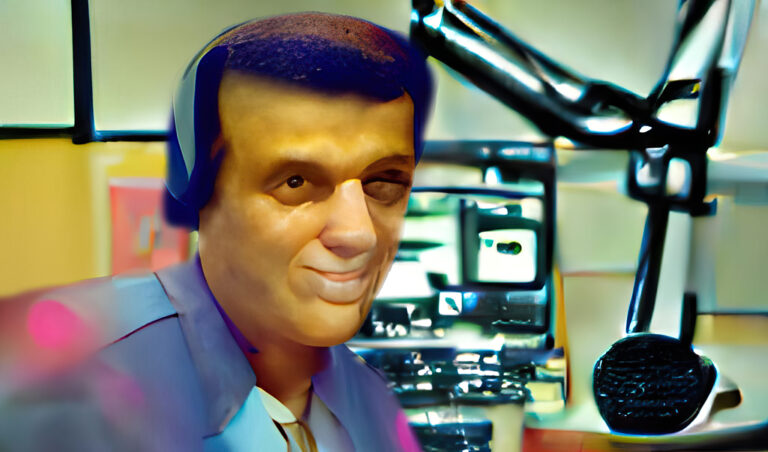Slinging swords, thrills, and one-liners with equal aplomb, what inspired Wizards And Warriors…and why didn’t it take off?
The brainchild of veteran writer/producer Don Reo, Wizards And Warriors owes its birth to two primary influences. According to an interview on fansite wizardsandwarriors.org, Reo was inspired by his son’s interest in Dungeons & Dragons, and at the time he was hardly alone; the game had already inspired an overwrought, cautionary movie-of-the-week, Rona Jaffe’s Mazes & Monsters, which warned against the game’s “dangerous” fantasy role-playing, but did at least serve the useful purpose of showing the world that young Bosom Buddies star Tom Hanks could act. Fortunately, Don Reo had something more entertaining in mind, which is where the other influence on his creation comes in.
Inspired by the “traditional fairytale with modern dialogue” twist of William Goldman’s novel The Princess Bride, Reo aimed for nothing less than bringing the feel of Goldman’s book to TV (years ahead of Goldman’s own adaptation of his book for the big screen). With costly location shooting and costuming, Wizards And Warriors was never going to be cheap, and it was doubly risky to build the show around a stylistic gag that the American TV audience hadn’t shown a knack for “getting.” Just a year before the show’s launch, the tongue-in-cheek Zucker-Abrams-Zucker series Police Squad had flopped in the ratings when viewers failed to latch onto the same brand of making-it-funny-by-playing-it-with-a-straight-face comedy that had made the same producers’ movie Airplane! a hit. Subtle, elaborately-constructed humor just wasn’t a diet staple of an audience weaned on laugh-track-drenched sitcoms.

Goldman was in on the joke, however – Reo consulted with the Princess Bride author on the tone and structure of the book so it could be matched in script form. (Even the “storytelling” framework of The Princess Bride is present in the two-part pilot, with the wizard Traquill recounting Prince Greystone’s adventures to a child; this element did not continue into the series proper.) Casting wasn’t a simple matter either; Reo and his casting directors ultimately settled on a proven combination of dramatic and comedic chops, in the form of an actor who’d had a rocky career. Actor Jeff Conaway had risen to public prominence in both the Broadway and Hollywood incarnations of Grease, and had since moved onto the sitcom Taxi, but during that show’s third season had been fired for a persistent drug abuse problem, an issue the actor had been battling since his teens. After Wizards And Warriors’ short stint, Conaway would work consistently on film and in TV, with his other notable genre credit being a lengthy stay aboard Babylon 5 in the 1990s as security officer Zack Allan. After struggling with drug addiction in the very public venue of the VH1 series Celebrity Rehab for several seasons, Conaway died in 2011.
Playing his faithful but out-of-shape squire was an actor well-acquainted with the comedy sidekick role, Walter Olkewicz. Julia Duffy, who would later gain fame in the ensemble casts of Newhart and Designing Women, took on the role of the vacuous Princess Ariel. Possibly the most fortuitous casting was on the side of evil, however: Wizards And Warriors brought Canadian actor Duncan Regehr into the public eye as the handsome but thoroughly evil Prince Blackpool; Regehr would become a frequent flyer in genre fare, from two iterations of Star Trek (a guest shot on The Next Generation and a recurring role as a Bajoran resistance leader on Deep Space Nine) to the short-lived original V series. And with mere hours to go before production on the pilot started, Richard Libertini bowed out of the part of Blackpool’s scheming wizard Vector, and the producers gave the role to one of the runners-up, Clive Revill, who had ample experience with the dark side, having played the voice and holographic image of the Emperor in the original 1980 cut of The Empire Strikes Back. (Revill has since been digitally excised from that movie as several successive revisions have replaced him with Ian McDiarmid, who portrayed the Emperor in the rest of the Star Wars movies.)

CBS immediately proved to be far from the show’s best friend. Irregular scheduling meant that the two-part pilot episode – originally written as a single script – aired as the second and third episodes, introducing characters that had already been seen in the first episode aired. Promotional support for the show, which aired as a mid-season replacement for the recently-cancelled Bruce Boxleitner series Bring ‘Em Back Alive, quickly grew sparse as the network demonstrated its inability to get a handle on its new series: was it a comedy? Was it swashbuckling drama? Would anyone “get it”? Genre shows hadn’t fared well in prime time, with the costs involved making them risky propositions with no guarantee of a return on that investment. Warner Bros., producing Wizards And Warriors for CBS, found useful corners to cut – such as the strange but effective practice of editing unused footage from the Warner film Excalibur into episodes requiring major battle scenes – but the show was still costly to make. And in any case, the prime time schedules of years past were littered with the bones of science fiction and fantasy shows that didn’t last: Battlestar Galactica, Buck Rogers, and others had failed to consistently deliver the massive audiences that tuned in for their spectacularly expensive premieres.

After only eight weeks, Wizards And Warriors was also consigned the genre TV graveyard, a victim of soft support from the network, and possibly guilty of being slightly ahead of its time. (To be fair, the show’s inspiration didn’t set the box office on fire either: a few years later, The Princess Bride landed in theaters with a dull thud, only catching on once the movie was available for repeat viewing at home on videotape – an afterlife that, in the ’80s, most television series simply didn’t get.)
As a side note, if the title “Wizards And Warriors” sounds awfully familiar, this wasn’t the first use of it…or the last. Mattel already had that name locked down at the time the series was devised, having sublicensed it from Reston Publishing. From there, the trail gets even murkier – Reston published a solo role-playing game book under the Wizards And Warriors title in 1982, and that, in turn, was a reprint of two previously published books based on an obscure paper-and-dice fantasy role playing game, Adventures In High Fantasy, that Reston had bought from its author, Jeffrey Dillow, who had been developing it through the 1970s as an alternative to Dungeons & Dragons while he attended Indiana University. It would appear that Mattel did nothing further with that brand name, but since it was a relatively recent acquisition, Warner Bros. still had to get permission to use it, and some money probably changed hands as a result. The two Wizards And Warriors role playing books do at least boast some Jim Steranko cover artwork. By the time Wizards And Warriors resurfaced as the title of a game published by Acclaim for the NES in 1987, neither Mattel nor Reston Publishing were acknowledged in the legalese in that game’s manual, so evidently they had allowed their legal interest in the title to lapse, and so had Warner Bros. and CBS.
Don Reo would continue plying his trade in Hollywood, creating later hits such as Blossom and My Wife And Kids. With the interest in swords and sorcery waning with the brief, fad-like flaring up of public fascination with Dungeons & Dragons, Wizards was relegated to the status of “cult classic” and was seldom seen in repeats, though a DVD release finally brought the series back to be appreciated (and perhaps mourned) by those who remembered its brief 1982 run and new audiences alike.





+ There are no comments
Add yours